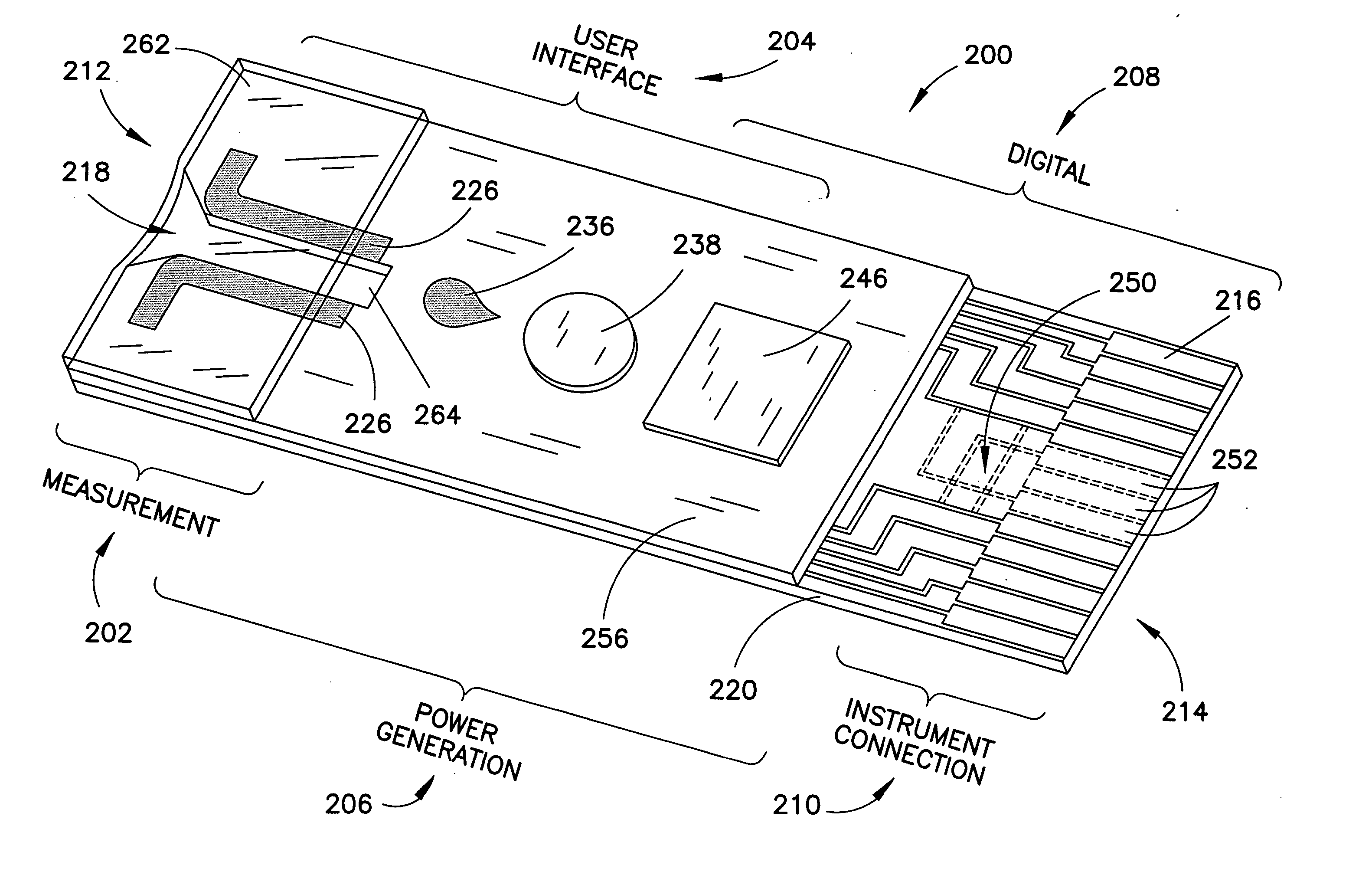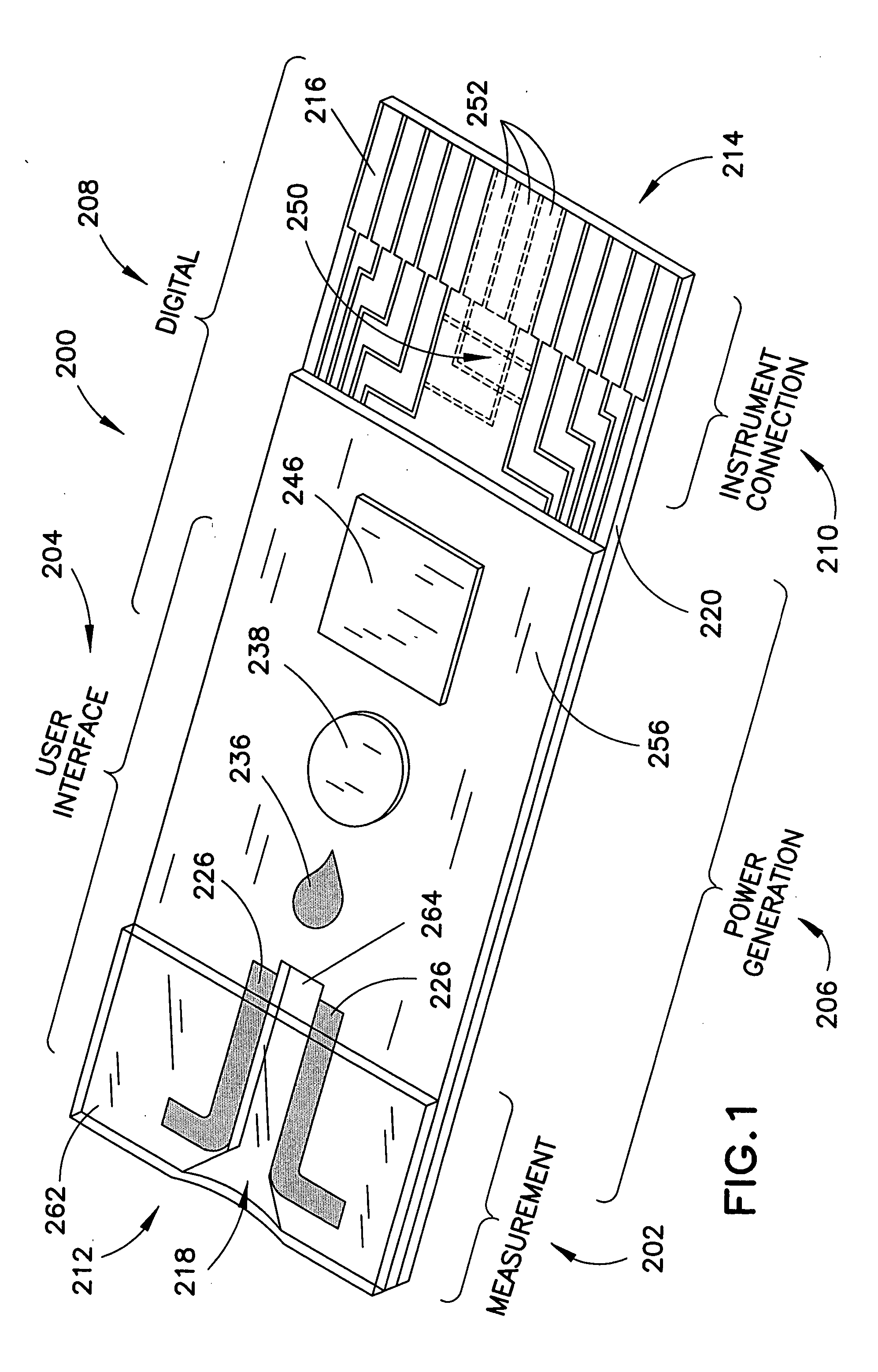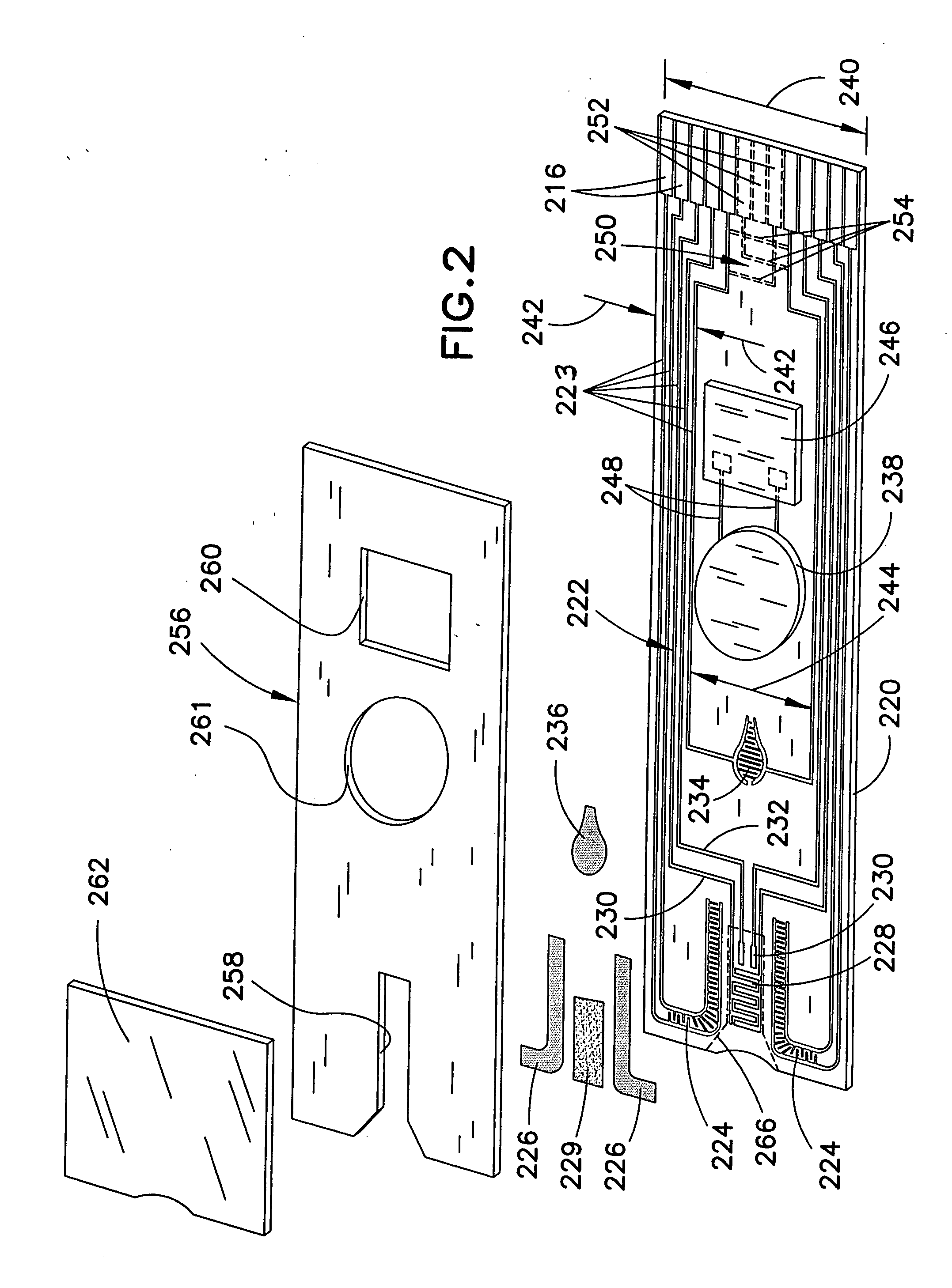Biosensor with multiple electrical functionalities
- Summary
- Abstract
- Description
- Claims
- Application Information
AI Technical Summary
Benefits of technology
Problems solved by technology
Method used
Image
Examples
example i
[0095] To preparing the coating, 0.012 g of tris (2,2′-bipyridyl) dichlororuthenium (II) hexahydrate (CAS Registry No. 50525-27-4) was combined with 1 ml of acetonitrile. The compound did not completely dissolve. Deionized water was then added dropwise until the ruthenium compound completely dissolved.
[0096] Two functional interdigitated micro-electrode arrays (IDAs) were used. The IDAs had 750 pairs of interdigitated fingers with each finger having a width of 2 μm, a length of 6 mm, and a spacing between the next closest finger (i.e., gap width) of about 2 μm. The IDAs were custom fabricated on a silicon wafer by Premitec Inc., Raleigh, N.C. The IDAs were each coated with 2011 of the solution just described. The coated IDAs were then placed in a desiccator and allowed to dry. The reagent coatings did not dry uniformly and had a ridge around the circumference of the coating.
[0097] Using a BAS 100 W electrochemical potentiostat, a 3 volt potential was applied across the micro-elect...
example ii
[0098] In order to obtain a better coating than that obtained in Example I, a solution of 1% PVP 25k (BASF) was prepared in deionized water. The ruthenium compound used in Example I was then mixed with the PVP solution in a 1:1 ratio and the resulting solution was applied to several additional IDAs. The first IDA had a spacing between the interdigitated fingers of approximately 2μ / m as described above and the other had a finger spacing of approximately 21μm and 50 finger pairs. This second IDA had a finger width of 21μm, a finger length of 6 mm and was formed on a Upilex substrate also custom fabricated by Premitec. The coating composition containing the PVP produced a uniform coating on both types of IDA's.
[0099] Using the Keithley SMU-236, a three (3) volt potential was applied across the IDA with the 21 / m finger spacing, but this voltage was not sufficient to cause the OLED to illuminate. Three (3) volts was also applied across the IDA with the 2 μm finger spacing, which caused ...
example iii
[0100] The electrodes used in the preceding examples were left at room temperature and humidity and the experiments described above repeated at approximately 1-2 month intervals. The OLEDs still illuminated with the same voltages used in the previous examples.
[0101] Other OLEDs.
[0102] It is anticipated that substituting other polymers in the OLED matrix used in the experiments above may improve the results, in terms of the voltage required to illuminate and the overall intensity achieved with a given voltage. One such compound is Poly(styrenesulfonate) / poly(2,3-dihydrothieno(3,4b)-1,4-dioxin), available from Aldrich. Other Poly(sodium, 4-styrenesulfonate) compounds may also perform well or better than the polymer used in the above examples. One of skill in the art would recognize that many other known light emitting compounds may work suitable as OLEDs for use in the biosensors disclosed herein.
PUM
| Property | Measurement | Unit |
|---|---|---|
| Length | aaaaa | aaaaa |
| Thickness | aaaaa | aaaaa |
| Thickness | aaaaa | aaaaa |
Abstract
Description
Claims
Application Information
 Login to View More
Login to View More - R&D
- Intellectual Property
- Life Sciences
- Materials
- Tech Scout
- Unparalleled Data Quality
- Higher Quality Content
- 60% Fewer Hallucinations
Browse by: Latest US Patents, China's latest patents, Technical Efficacy Thesaurus, Application Domain, Technology Topic, Popular Technical Reports.
© 2025 PatSnap. All rights reserved.Legal|Privacy policy|Modern Slavery Act Transparency Statement|Sitemap|About US| Contact US: help@patsnap.com



